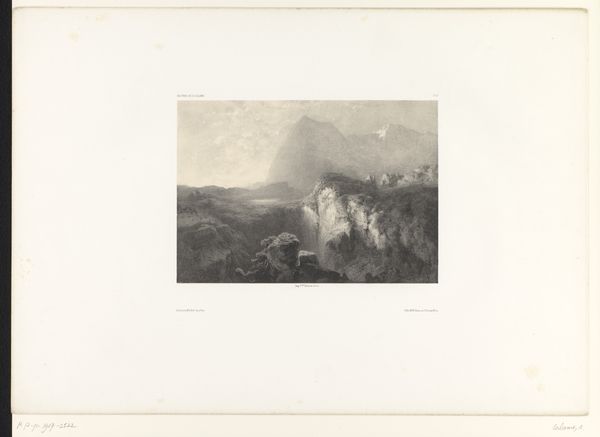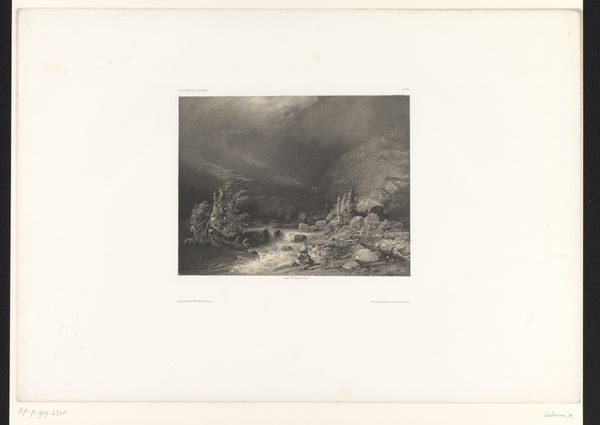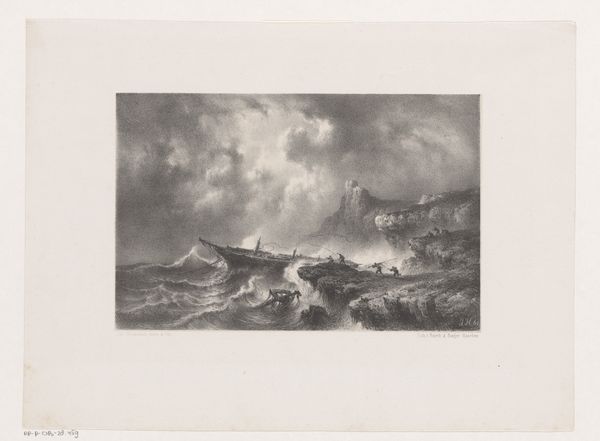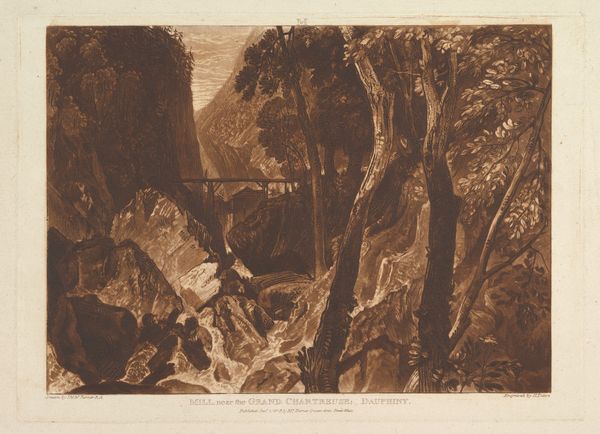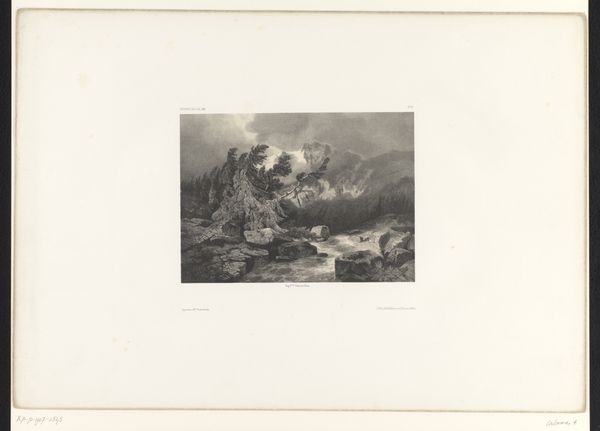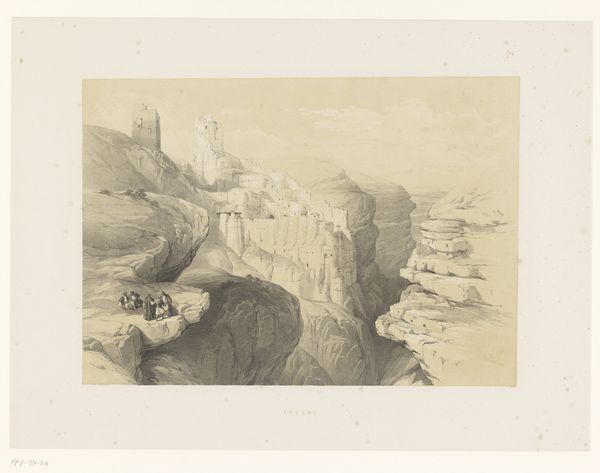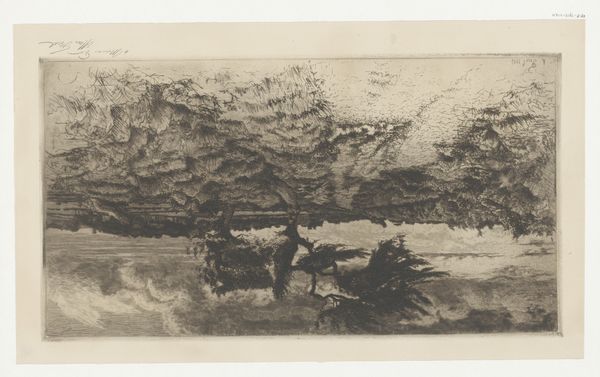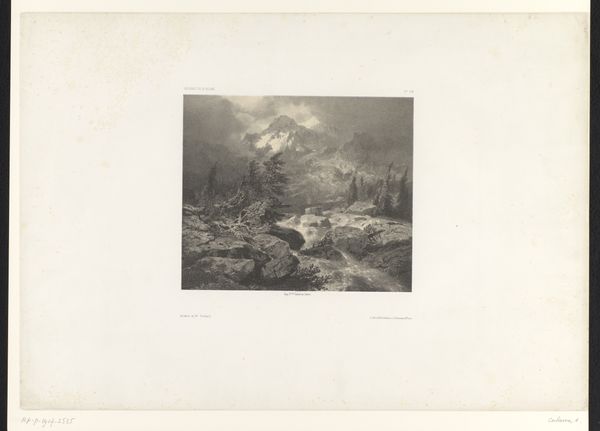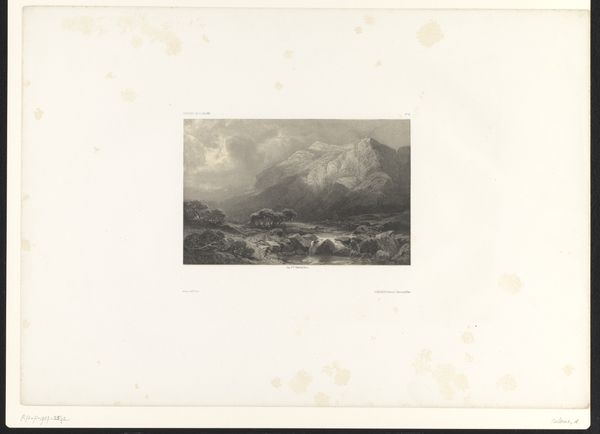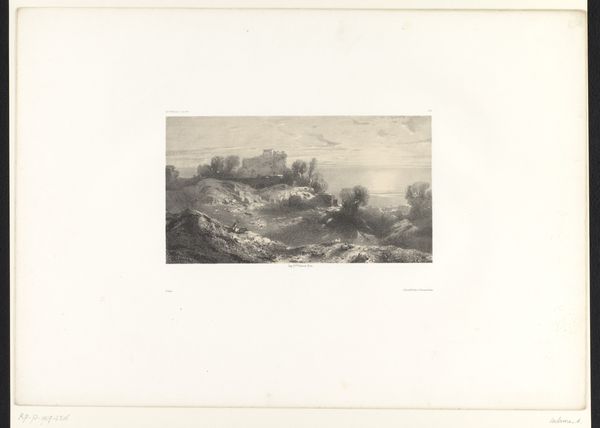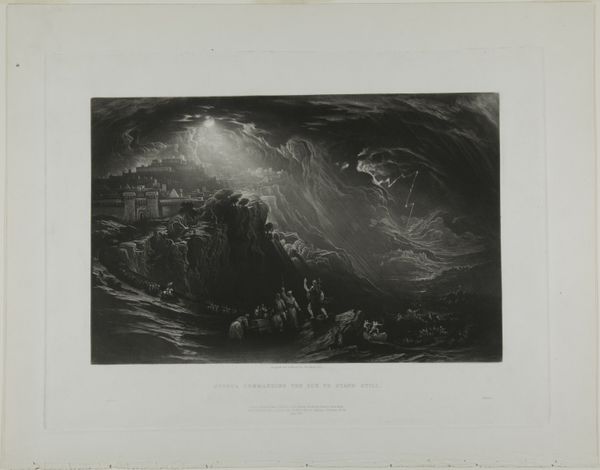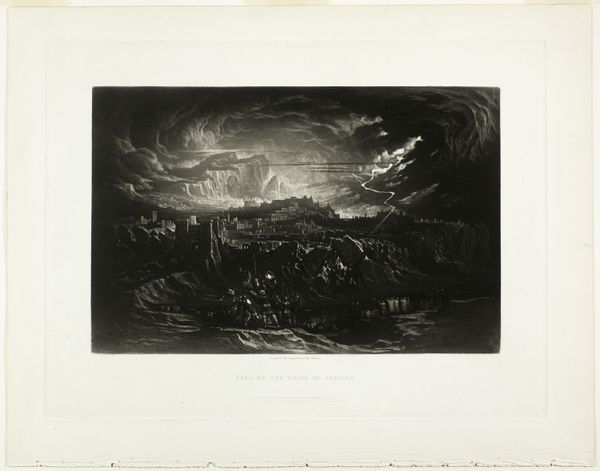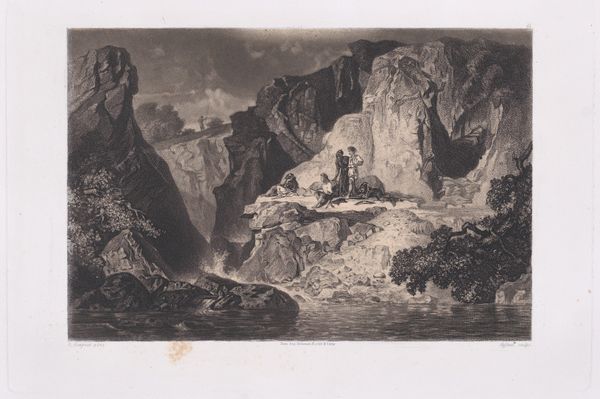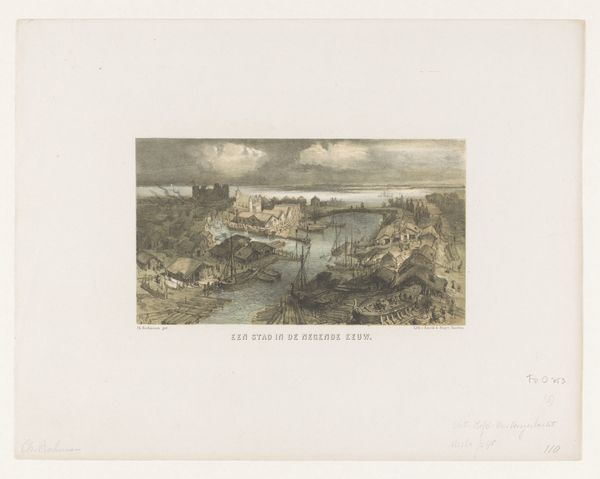
Dimensions: height 528 mm, width 694 mm
Copyright: Rijks Museum: Open Domain
Editor: So, this is Léon Jean Baptiste Sabatier's "View of the Devil's Bridge in the Gotthard Pass," made between 1849 and 1856 using pencil. It feels so dramatic! The bridge looks almost swallowed by the landscape. What do you see in this piece, especially beyond the obvious landscape? Curator: This Devil's Bridge resonates deeply. Bridges, by definition, connect, but this one, shrouded in mist and shadow, whispers of something more primal. Do you notice how the bridge, a symbol of human ingenuity, is dwarfed by the overwhelming scale of the natural world? Editor: Definitely, it feels deliberately placed to emphasize nature’s power. Almost like a battle. Curator: Precisely! The Devil, the natural world, the chaotic energy of the unbridled landscape – they all collide. The bridge, then, becomes a precarious symbol of humanity’s attempt to control or at least navigate the sublime terror. And remember the Romantic period this drawing hails from. It represents an awakening from rationalism to an embrace of emotion, and particularly the power and the awe and terror of the natural world. Notice how the soft pencils heighten the emotional feel of it all. How does that soft tone, compared to say, harsh engraving, add to the story? Editor: It makes it feel more vulnerable, ephemeral. As if the whole scene could vanish at any moment. Curator: Exactly. This Devil’s Bridge captures humanity's struggle against both external and internal forces, symbolized through powerful cultural memory and the suggestive, evocative capacity of imagery. Editor: I see it now – it’s more than just a landscape. It is a narrative about the human condition. Thanks so much.
Comments
No comments
Be the first to comment and join the conversation on the ultimate creative platform.
